Beyond martyrdom and momentum: The matrix of the 1969 mass movement

January 24 marked the Mass Uprising Day in Bangladesh, a commemoration of the 1969 movement that—energised by the radical and revolutionary spirit of the global 60s—brought down the decade-long dictatorship of Pakistani military ruler Ayub Khan. This day remembers the movement's martyrs, most notably the teenage activist Matiur Rahman Mallik. In his pocket was found a heartbreaking letter to his mother: "Mother, I am going to the procession; if I don't return, I'm afraid that I have become a martyr." And I witnessed new Matiurs rise in the July uprising itself—forever inscribed in people's collective memory is Abu Sayeed, shot dead by the police on July 16, 2024. Indeed, the significance of the 1969 mass uprising ranges far beyond the orchestrated violence of Ayub Khan's military-bureaucratic regime and his eventual downfall.
Indeed, can an image—a visual image—capture an entire history of a mass movement written in blood? Can the political and the historical converge and constellate within the micro-space of a radiantly singular poetic image? One might turn to German Marxist cultural theorist Walter Benjamin's notion of the "dialectical image"—an image as "dialectics at a standstill"—wherein "what has been" fuses with "the now" in a flash to form a constellation. I think one can locate such an image in Shamsur Rahman's iconic poem "Asader Shirt" ("Asad's Shirt"). It offers a vivid visual image of Asad's blood-soaked shirt, a haunting emblem that ignites indignation and incites outrage. Asad's brutal killing on January 20, 1969 was instrumental in morphing an entire student movement into a mass uprising. The poem portrays Asad's shirt as persistently fluttering across the sun-scorched landscapes of parched hearts, gatherings of awakened people, and crossroads of united consciousness. It even transformed into the flag of the people's souls. Every mass uprising births a symbol—or a constellation of symbols—configured from shared rage and discontent, bound by a singular purpose, and mobilised by the many voices and hands of a unified people.
In fact, in the history of Bangladesh's formation and its Liberation War against the neocolonial, military-bureaucratic regime of Pakistan, the mass uprising of 1969 is a significant milestone. Similarly, the mass uprising of 2024—unprecedented and the largest in the country's history—is now reckoned as a milestone, shaped by its own conjunctural specificities. While these two movements are distinct—one opposing a foreign military tyrant and neocolonial domination, the other challenging a native tyrant and the historically determinate form of fascism within the country—they are not entirely disconnected. I concur with Italian philosopher and social theorist Alberto Toscano's crucial contention in his book Late Fascism (2023) that fascism is mutable and that "fascism, like other political phenomena, varies according to its socioeconomic context." But I do not posit a pure disjuncture between 1969 and 2024, just as by no means do I draw a sharp disjuncture between 1971 and 2024. I submit that they are all profoundly connected. I will return to this issue later; for now, let me trace some of the crucial thematic and politico-ideological trajectories of the 1969 mass uprising, an event rendered intelligible by what I call its "dialectical temporality," marked by converging connections in motion—ones that move back and forth in historical time.
Every mass uprising is a process, not a one-off product. The 1969 mass uprising was the culmination of a protracted process of resistance, rooted in the structural inequalities and class contradictions generated by what I would call a neocolonial mode of production, organically linked, of course, to the uneven development of capitalism itself. East Pakistan, systematically exploited as a colonial periphery, generated significant wealth through agriculture and trade, yet endured staggering disparities compared to West Pakistan. The working class and peasantry endured the harshest burdens of this neocolonial exploitation, grappling with acute poverty, food shortages, and relentless price hikes. Furthermore, the One-Unit policy and the Agartala Conspiracy Case of 1968—targeting the prominent and popular Awami League leader Sheikh Mujibur Rahman—provoked widespread outrage. In fact, under the militarised state apparatus of Pakistan, democracy never existed, with power remaining concentrated in the hands of a comprador bourgeoisie and feudal elites aligned with imperialist interests while leaving particularly the proletariat and peasantry disenfranchised at more levels than one—issues repeatedly accentuated by the movement's foremost leader, Maulana Abdul Hamid Khan Bhashani.

And then, culturally, attempts to impose Urdu as the singular state language and efforts to erode East Bengal's identity dialectically accelerated and reinforced an already growing and even insurrectionary Bangalee nationalism. The 1952 Language Movement erupted into the theatre of history as a foundational resistance to this domination, linking linguistic and cultural struggles to broader political demands for justice. These intersecting issues and compounded hardships mobilised students, workers, peasants, and intellectuals in a collective uprising against Ayub Khan's regime in 1969. Here, I must underscore a point often overlooked in standard and partisan narratives: in 1968, Maoist revolutionary Siraj Sikder was the first to have theorised East Pakistan as "a colony of West Pakistan," calling for armed struggle to establish an independent and socialist East Bengal. I submit that the political, theoretical, and conceptual history of the 1969 mass uprising remains unjustly incomplete without recognising the contributions of left revolutionary figures like Maulana Bhashani and Siraj Sikder. Again, I underline this point simply because fascist Awami League narratives have routinely overlooked their roles, just as they have marginalised the centrality of peasants and working-class people—without whom this mass uprising holds no real meaning.
But why is January 24 commemorated as Mass Uprising Day in Bangladesh? As I mentioned earlier, on January 20, the tragic death of leftist student leader Amanullah Mohammad Asaduzzaman (now known as just Asad) ignited tremendous public outrage, while his blood-soaked body/shirt turned out to be a powerful symbol of resistance—even a "material force" in the Marxist sense—producing a paradigmatic conjunction of grief and fury across the region. Just three days later, on January 24, the police killing of young Matiur Rahman Mallik, along with students like Mokbul, Rustam and Alamgir, galvanised mass indignation and anger on a scale hitherto unknown. Of course, this was the culmination of a movement sparked earlier by Maulana Bhashani, who had called for strikes beginning on December 6, 1968 and resulting in deaths and intensifying resistance. On December 29, Bhashani called for a nationwide strike and marketplace closures, reviving public momentum. Students soon introduced the 11-Point Programme demanding full autonomy for East Pakistan, with the movement gaining traction by January 17, 1969. On January 24, as many as 500,000 people gathered at Paltan Maidan, determined yet restrained, choosing to march to Iqbal Hall after Matiur's funeral prayers, instead of attacking the Governor's House. This united front of students, workers, and political parties pushed the struggle beyond the state's control.
But it is also true that ruling class narratives characteristically leave out those martyrs who were already neglected. Erasures and exclusions are obviously matters of class politics. For instance, Hasanuzzaman and Janu Mia—workers killed in then Chittagong on January 24, 1969—and even Anwara Begum—a martyr for whom a near-forgotten park in Farmgate, Dhaka is named—continue to remain marginalised in mainstream historiography. Anwara was shot by police while breastfeeding her four-month-old daughter Nargis at her Nakhalpara home on January 25, 1969. The 1969 Mass Uprising witnessed the sacrifices of many other peasants and workers, whose exhaustive list couldn't be compiled by any government so far. And I find it significant to invoke at least a few names. Among them was Abu, a bicycle mechanic, who was killed in December 1968. Musa Mia, a labourer from Faujdarhat, and farmers Mia Chan, Hasan Ali and Cherag Ali from Hatir Diya also sacrificed their lives. In January 1969, workers like Sorol Khan, Anwar Ali and Julhas Sikder were killed in Dhaka, Shimulia and Siddhirganj, respectively. February saw further sacrifices, including worker Abdul Ali in Dhaka, press worker Ishaq in Nazirabazar, and workers Lokman, Mujibur Rahman, Hafizur Rahman, and Abdur Rahman across various regions. Other martyrs included tailor Atahar Khan, carpenter Abul Hashem, and hotel worker Shamsu, who died alongside many others. These names represent the labouring masses whose sacrifices fuelled the struggle against the military-bureaucratic regime of Ayub Khan.

But the uprising—although revolutionary in aspirations—lacked a solidly unifying revolutionary party or platform as such to steer it towards lasting change. The leadership of figures like Maulana Bhashani and the pivotal role of students notwithstanding, the fragmented left and other status-quo-oriented political forces undermined or even destroyed its radical potential. Thus, Ayub Khan's dictatorship was replaced by another military regime under Gen Yahya Khan, which soon ratted on the people's will, later culminating in genocide in East Pakistan. Yet, the mass uprising achieved significant milestones. It compelled the Pakistan government to release Sheikh Mujibur Rahman, and all accused in the Agartala Conspiracy Case, marking a major victory for the movement. It also brought the Six-Point Demand to the fore, cementing them as a call for East Pakistan's autonomy. And the uprising facilitated the emergence of class consciousness and advanced class struggles in both rural and urban areas. Furthermore, it considerably heightened the aspiration for an independent state among the people of East Pakistan, carving out the path for Bangalee nationalism to play a pioneering role in the Liberation War of 1971.
East Pakistan and Bangladesh have hitherto experienced five pivotal uprisings, beginning with the 1952 Language Movement, which prompted East Bengal's political awakening and led to the 1954 fall of the Muslim League. The 1969 mass uprising ousted Ayub Khan, though military rule persisted under Yahya Khan. In 1971, relentless mass movements paralysed the government, paving the way for the Liberation War. The 1990s saw another uprising against Ershad's regime, and the most recent, the quota reform movement, began as student protests against job quotas and campus oppression, evolving into a broader, even an unprecedented, mass movement known as the July uprising.
But no uprising, movement or even revolution is ever a total success or a total failure. The great African writer and activist—my good comrade—Ngũgĩ wa Thiong'o rightly distinguishes between "independence" and "liberation." We gained independence, but true liberation still remains a radically unresolved question in our history. That's why 1969 and 2024 are interconnected—the unfinished struggle for equality, social justice, and human dignity continued. But we have miles to go, to say the least.
Dr Azfar Hussain is director of the graduate programme in social innovation and professor of integrative/interdisciplinary studies at Grand Valley State University in Michigan, US. He is also summer distinguished professor of English and Humanities at the University of Liberal Arts Bangladesh (ULAB) and vice-president of the US-based Global Center for Advanced Studies (GCAS).
Views expressed in this article are the author's own.
Follow The Daily Star Opinion on Facebook for the latest opinions, commentaries, and analyses by experts and professionals. To contribute your article or letter to The Daily Star Opinion, see our guidelines for submission.

 For all latest news, follow The Daily Star's Google News channel.
For all latest news, follow The Daily Star's Google News channel. 
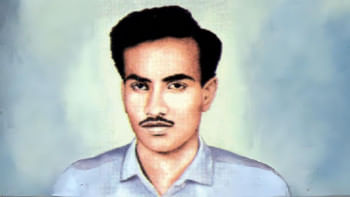
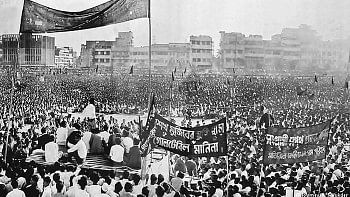




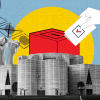
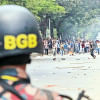


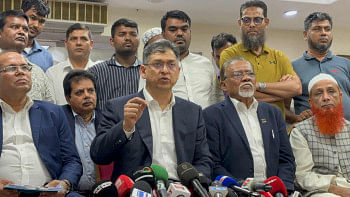
Comments